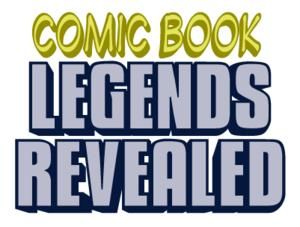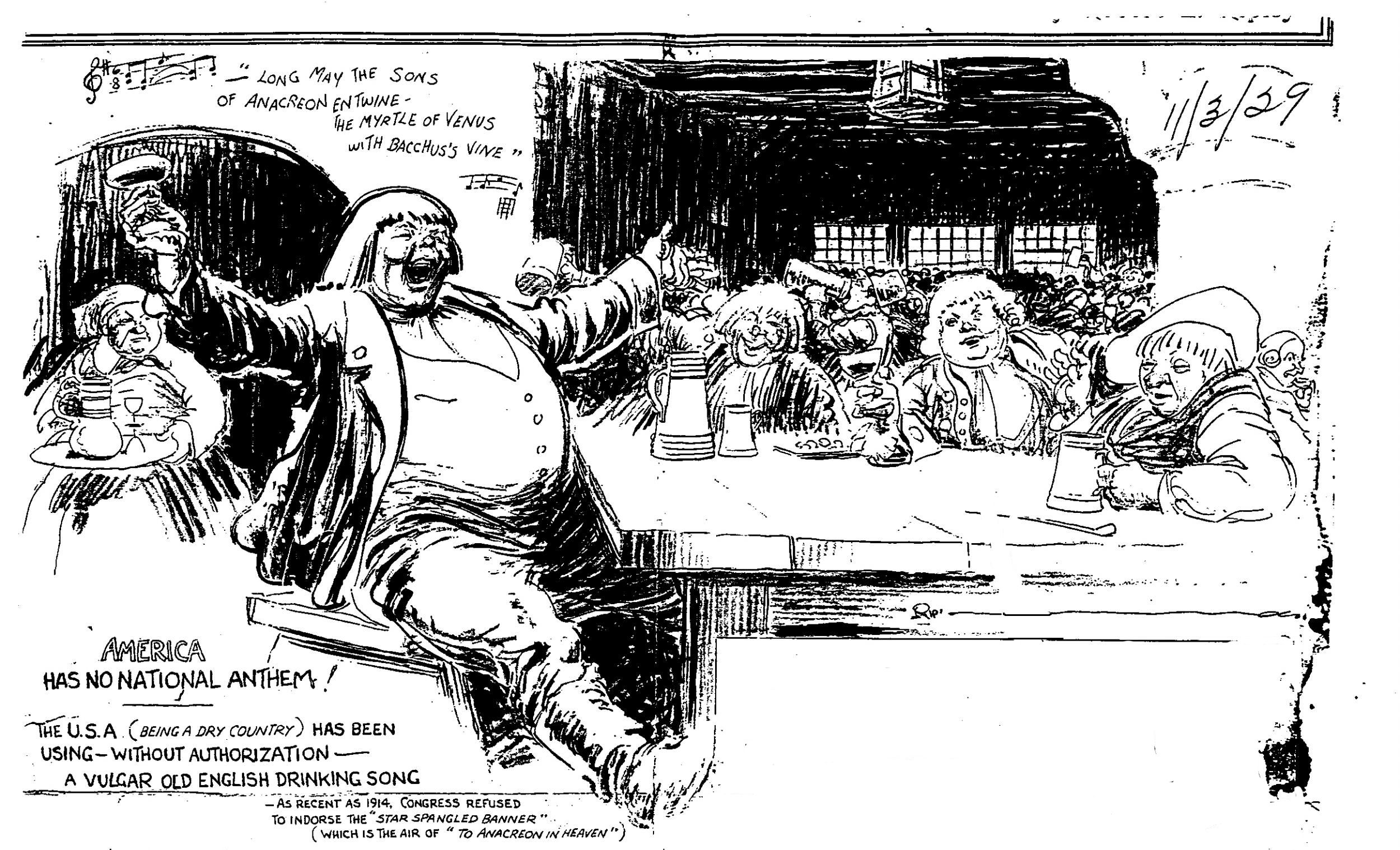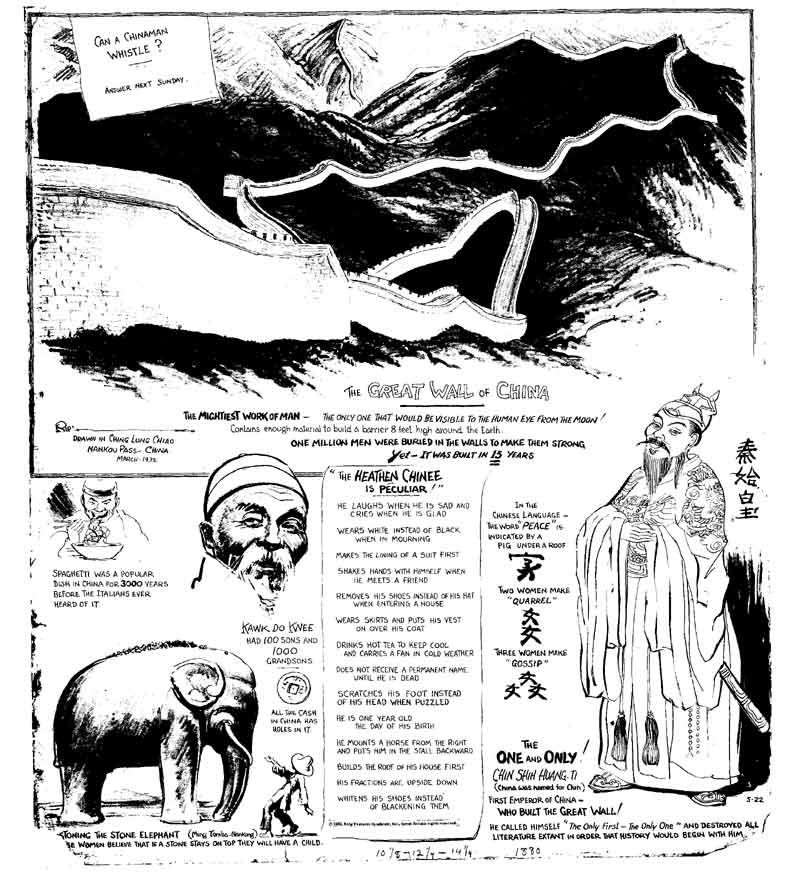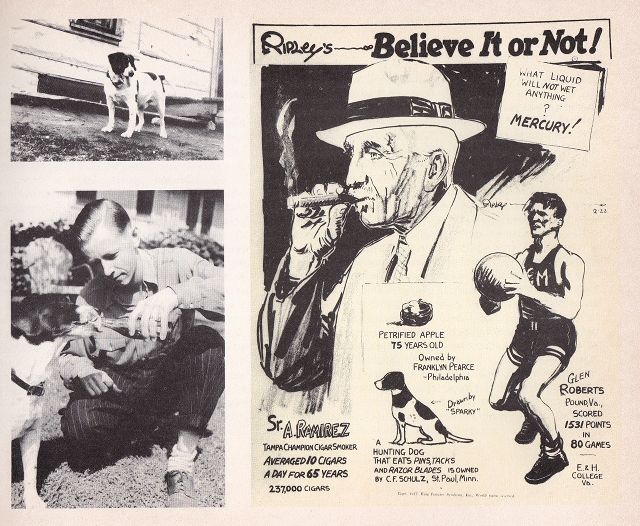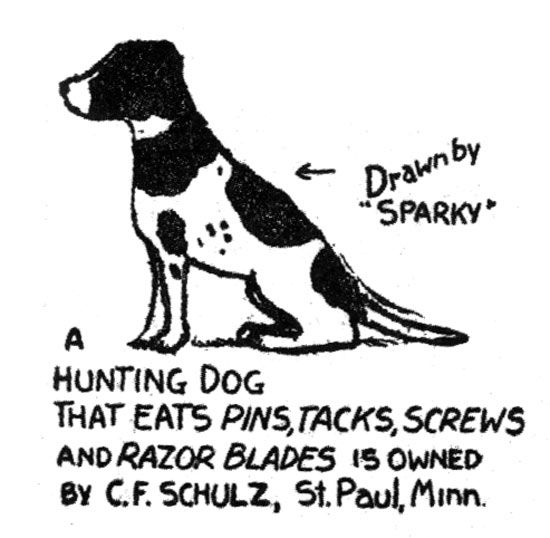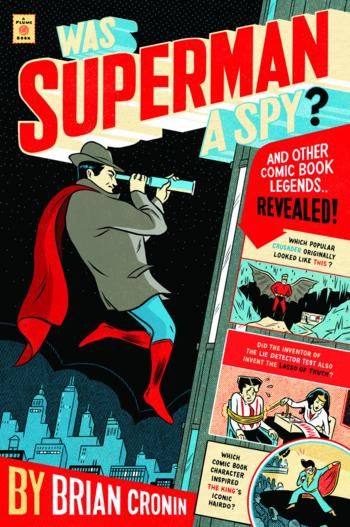Welcome to the three hundredth and eighth in a series of examinations of comic book legends and whether they are true or false. This week, we examine three legends related to the classic comic strip, Ripley's Believe It or Not!, including whether a Ripley's strip led to the "Star Spangled Banner" becoming the national anthem, how a Ripley's strip led to a famous urban legend and discovering which classic cartoonist made his debut in a Ripley's comic strip at the ripe old age of 15!
Click here for an archive of the previous three hundred and seven
Let's begin!
Ripley's Believe It Or Not! is a media franchise that began over 90 years ago with the beginning of Robert Ripley's nationally renowned comic strip, Ripley's Believe It Or Not!, which began in December 1918 as a strip about sports accomplishments labeled Champs and Chumps. In October 1919, Ripley expanded the purview of the strip and changed the name to the name its held ever since! The strip is still published today, drawn by John Graziano. Ripley's has become much more than a strip, though, as it has spawned off a radio series, a TV series and a number of famous museums of oddities.
Here, though, are three legends about the actual comic strip.
COMIC LEGEND: A Ripley's Believe It Or Not! cartoon led to "The Star Spangled Banner" becoming the national anthem of the United States of America.
STATUS: I'm Going With False
On November 3rd, 1929, Ripley's Believe It Or Not! featured the following strip...
On March 3rd, 1931, "The Star-Spangled Banner" officially became the national anthem of the United States of America.
Ripley certainly took credit for the song becoming the anthem, and even to this day, Ripley's (the company) is taking credit, as you can see by this post on their website back in February.
I certainly do not wish to say that Ripley's cartoon had absolutely zero impact upon the song becoming the national anthem, but I think the impact is over-exaggerated to the point where it is effectively false.
By the time this strip was published, the debate over whether "The Star Spangled Banner" should be the national anthem had been going on for more than a decade. Woodrow Wilson even named the song as the national anthem in 1916, but it was not yet something ratified by Congress.
By the time this strip was published, the Veterans of Foreign Wars had collected over four million signatures on a petition for the song to be adopted as the national anthem.
So when you add in the fact that the strip was pretty clearly not a "call to action," but in fact, more of a mocking of the song, I find the claim that Ripley was responsible for the anthem being adopted to be pretty weak.
That said, while the movement had been gaining steam for quite some time (I read about 10 years worth of New York Times articles on the subject and there were a LOT of articles about the anthem, including contests to come up with an alternate choice to "The Star-Spangled Banner"), it is true that it was not until early 1930 that it was finally passed by Congress, so I guess you could argue that Ripley's cartoon put them over the top. However, in all of the articles written about the subject at the time, no mention of the Ripley cartoon was made. I certainly cannot say with a certainty that it did not have some impact in the few months it was out before the bill was ratified by Congress, but I tend to doubt it.
Especially when Ripley's claims tend to take credit for the petitions, petitions that existed well before his comic strip. And, again, look at the strip - that is no "call to action." So I am confident in this being false enough for a false.
Check out the latest Baseball Legends Revealed to learn the strange story of the New York Yankee who couldn't make his college baseball team as a walk-on! Plus, discover the strange path that Harry Heilmann took on his way to the Baseball Hall of Fame!
COMIC LEGEND: A Ripley's Believe It Or Not! was one of the first places to establish the myth that the Great Wall of China could be seen by the moon, and it made the claim decades before space travel existed!
STATUS: True
A very notable urban legend is the notion that the Great Wall of China can be seen by the naked eye from the moon. While no NASA lunar astronaut have ever specifically attempted to find it, it is clearly not true.
To wit, the width of the Great Wall from the moon would be akin to seeing a human hair viewed from 2 miles away. It is not happening.
What's amazing, though, is that the most famous claims of this story happen years BEFORE man ever landed on the moon!
The claim actually was made over 200 years ago, but it was almost certainly made famous by the following 1932 Ripley's cartoon...
1932!! 37 years before man walked on the moon, and yet the claim was being advanced! Better yet, it was being BELIEVED!
While pretty much everyone will agree that you can't see the Great Wall from the moon, there is some debate over whether you can see it from outer space, period. A U.S. astronaut, Leroy Chiao, posted a photograph taken from the International Space Station where you can sort of/kind of see the Great Wall, if you know exactly where to look.
Check out the latest Basketball Legends Revealed to learn the truth behind Anfernee Hardaways's unusual first name! Plus be amazed by how close Bob Cousy wad to becoming a New York Knick!
COMIC LEGEND: Charles Schulz's first published drawing was in a 1937 Ripley's Believe It Or Not!
STATUS: True
In 1937, the following cartoon appeared in an installment of Ripley's Believe It Or Not!:
(Here's a spotlight of the cartoon pre-publication. It looks like they whited out one of the words...
)
Yep, that is, indeed, a drawing by a 15-year-old Charles "Sparky" Schulz, drawing the dog that would later inspire a certain other famous dog...
I've heard a story about this drawing that I've never been able to confirm. Apparently, when Schulz submitted the drawing, he phrased it with "screws" as the last in the list ("a hunting dog that eats pins, tacks, razor blades and screws"), but the cartoon re-edited it so as to not confuse people as to the meaning of the word "screws."
Can anyone confirm that?
Okay, that's it for this week!
Thanks to Brandon Hanvey for the Comic Book Legends Revealed logo!
Feel free (heck, I implore you!) to write in with your suggestions for future installments! My e-mail address is cronb01@aol.com. And my Twitter feed is http://twitter.com/brian_cronin, so you can ask me legends there, as well!
Follow Comics Should Be Good on Twitter and on Facebook (also, feel free to share Comic Book Legends Revealed on our Facebook page!). If we hit 3,000 likes on Facebook or 3,000 followers on Twitter, you'll have the option to get a bonus edition of Comic Book Legends the week after we hit 3,000 likes or 3,000 followers! So go like us on Facebook and follow us on Twitter to get that extra Comic Book Legends Revealed! Not only will you get updates when new blog posts show up on both Twitter and Facebook, but you'll get original content from me, as well!
Also, be sure to check out my website, Legends Revealed, where I look into legends about the worlds of entertainment and sports, which you can find here, at legendsrevealed.com.
Here's my book of Comic Book Legends (130 legends - half of them are re-worked classic legends I've featured on the blog and half of them are legends never published on the blog!).
The cover is by artist Mickey Duzyj. He did a great job on it...(click to enlarge)...
If you'd like to order it, you can use the following code if you'd like to send me a bit of a referral fee...
Was Superman a Spy?: And Other Comic Book Legends Revealed
See you all next week!

